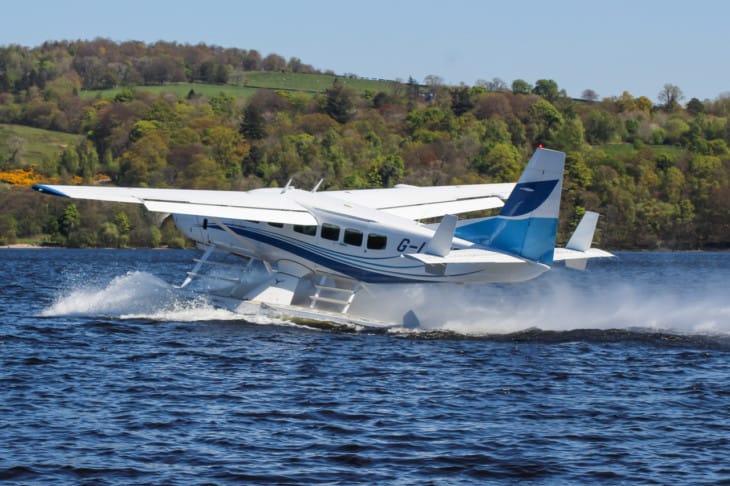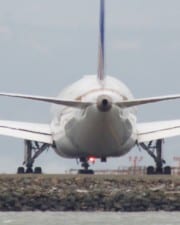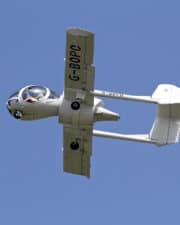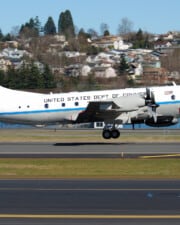Depending on where you live, an aquatic aircraft might be more useful than one with a more conventional landing gear configuration. But within the realm of aquatic aircraft, there are two main subsets of aircraft: seaplanes and floatplanes. So how do they differ?
The main problem with the confusion between seaplanes and floatplanes is that floatplanes are generally classified as seaplanes in the US, despite the very real differences between the two.
What this means is that even the most experienced pilots and avgeeks confuse them for being one and the same, rather than two distinct types.
We’ll aim to look at both aquatic aircraft types in this guide, the noticeable differences in how each are (and should be) classified, and ultimately which you might prefer if you’re looking at purchasing one of these seaborne aircraft.
About Seaplanes
A seaplane is a fixed-wing, powered aircraft that can land on water, float for as long as necessary, and take off again from the water.
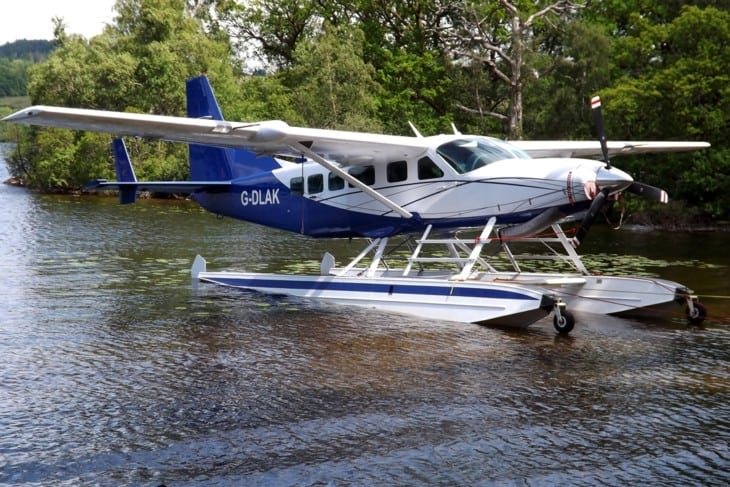
In the USA, the word ‘seaplane’ means any airplane that can use a body of water as a runway for takeoff and landing, including floatplanes, which we’ll come to later.
It may seem strange to say a seaplane can ‘land’ on water. For that reason, purists say a seaplane can ‘alight’ on water. I’ll stick with ‘land’, which is the term most people and pilots use.
Leaving floatplanes (a subset of seaplanes) aside for the moment, let’s deal with seaplanes whose whole fuselage sits in the water when they land. To achieve that, the underside of the fuselage is designed like the hull of a boat.
Why Were Seaplanes Developed?
There has long been a need for powered flight to and from water, which has driven aviation pioneers to find a solution. The story began in 1876, when French aviator Alphonse Pénaud patented a theoretical aircraft with a boat-like hull.
Wilhelm Kress of Austria tried out a seaplane named Drachenflieger, but unfortunately it proved to be under powered and failed to fly.
In 1910, Henri Fabre, another French airplane designer, planned and built the first successful seaplane.
Although Fabre’s aircraft more resembled a floatplane (see below) than a seaplane, it was the first aircraft to successfully take off from water, and land on water.
Fabre’s design had features that we still see on seaplanes today, including high-mounted engines to keep them clear of the water and the spray generated on takeoff and landing, and a water rudder for maneuverability while taxiing on water.
The following year, the American aviation pioneer Glenn Curtiss came up with a different design for a seaplane – one that had both floats and wheels, and could thus touch down on water or on land. The amphibious airplane had arrived.
Although many unmodified airplanes can land on water and float for a time, it’s a one-way trip for that aircraft unless it is specially modified to float indefinitely.
During the Second World War, from 1939 to 1945, it became necessary to get men and supplies into a number of areas by air, and there were not always suitable runways or open areas of land near where the deployments were needed.
So, someone came up with the idea of using bodies of water – lakes, rivers and ocean – as landing strips, building upon Fabre and Curtiss’s concept of a seaplane.
If the lake, river or ocean area is large and unobstructed, the ‘runway’ can be as long as the pilot needs it to be, so heavy payloads, and long takeoff and landing runs, are less of a problem than they might be on land.
Also, on a conventional landing strip, it’s rare for the wind to be right where you want it, straight down the runway, right on the airplane’s nose.
With a seaplane and a large body of water, you can choose your own runway heading to make best use of the wind. Thus, crosswind landings and takeoffs are less common when flying a seaplane.
What Purpose Do Seaplanes Serve?
In the war, seaplanes delivered troops, supplies and equipment to areas of operation that didn’t have terrestrial runways available. Flying boats were powerful seaplanes with large, boat-shaped hulls that could carry a great payload.
These days, seaplanes carry passengers and supplies to and from locations that don’t have suitable terrestrial runways but are close to bodies of water, such as islands, or remote lakeside settlements.
About Floatplanes
Remember, in the USA, a seaplane is any airplane that can operate on water. That includes the flying-boat type of airplane described in the previous section, as well as the floatplanes we are going to look at now.
There are two main designs of floatplane.
In the single-float configuration, one large float is mounted centrally beneath the fuselage, with smaller wing-mounted floats to add stability. One famous example is the Spruce Goose. The more common twin-float layout has floats in much the same position as main landing gear wheels.

Why Were Floatplanes Developed?
Floatplanes were developed as an opportune way of combining the aquatic capabilities of a seaplane with the ready availability of easily modifiable, conventional airplanes.
In other words, a floatplane has several of the advantages of a seaplane, without the need to design and build a whole new airplane with a watertight fuselage.
Many floatplanes are modifications of airplanes designed to operate on terrestrial runways, replacing the wheeled landing gear with floats instead.
For example, the de Havilland Otter and Twin Otter can be specified with conventional wheels, or floats, or even skis. Their short take-off and landing capability makes them ideal floatplanes.
What Purpose Do Floatplanes Serve?
Floatplanes make it possible to access remote locations that have no landing strip but are close to bodies of water.
This allows supplies, medicines and medical personnel to reach isolated communities who might otherwise have to wait much longer for slower forms of transportation.
How Are Seaplanes and Floatplanes Different?
A floatplane looks much more like a land-based airplane than a flying-boat seaplane. Basically, most floatplanes are terrestrial aircraft that have floats instead of wheels. The floats are usually slender in shape, mounted on gear struts.
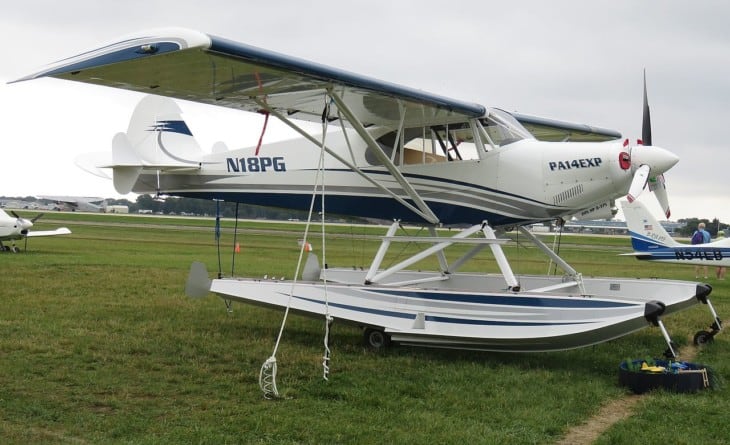
A floatplane’s fuselage does not normally come into contact with the surface of the water.
Therefore, floatplanes do not usually need special design modifications such as over wing-mounted engines.
Flying-boat seaplanes, however, are designed to sit much lower in the water, so high-mounted engines are essential.
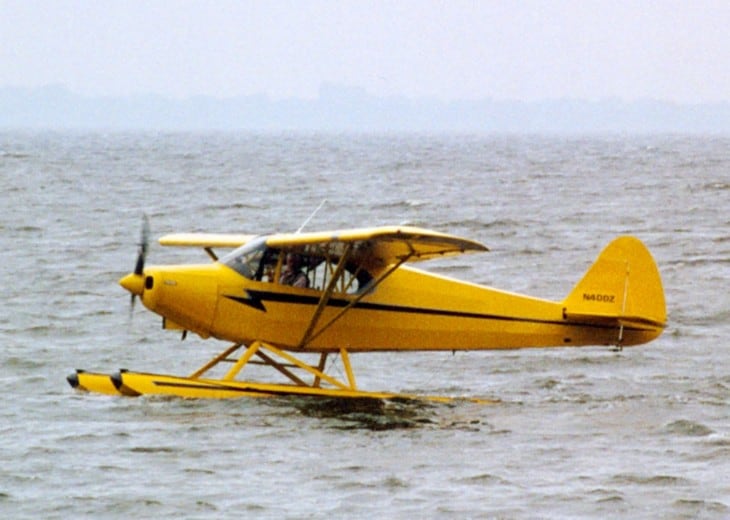
How Are Seaplanes and Floatplanes Similar?
In the USA, the term ‘Seaplane’ includes Floatplanes (airplanes that have floats instead of wheels, but otherwise look very much like conventional airplanes) and flying boats whose fuselage is designed to float on water, and to take off and land in water.
Both types that we are comparing in this article – that is, flying-boat seaplanes, and floatplanes that more resemble land-based airplanes – are designed to be able to land on water, remain floating on the water for as long as necessary, taxi on water, and take off again from water.
What’s Better About Seaplanes?
Flying-boat seaplanes can carry much more weight than floatplanes, because the load is spread over the whole of the fuselage that sits in the water.
Seaplanes can therefore carry large payloads, and can be loaded up with passengers, baggage, cargo and fuel for a long trip.
Seaplanes of this type can operate in choppy waters, where the wave height is 1 foot or more, because the single flotation device (the underside airplane’s fuselage) is large enough to part the waves like the hull of a boat.
Floatplanes, on the other hand, cannot operate safely if the waves are more than a foot high.
Flying-boat seaplanes suffer less from drag than do floatplanes, because in the former case the float is the hull itself, so no additional flotation device is needed.
Floatplanes are stuck with their floats hanging in the wind during flight, creating a lot of drag, increasing fuel burn and limiting speed.
What’s Better About Floatplanes?
Although floatplanes are generally smaller than flying-boat seaplanes, the former sit higher out of the water because of their design, with the floats on struts beneath the fuselage.
Therefore, floatplanes can usually come directly alongside docks or jetties after landing on water, without the wings fouling any dockside structures.
The compact size and lower weight of floatplanes allows them to get into and out of smaller bodies of water, making them more versatile than larger seaplanes.
A floatplane has less surface area in contact with the water than does a flying-boat seaplane, so there will be less water drag, reducing takeoff length before the airplane attains enough air speed to be able to fly.
Conclusion
So, it comes down to a comparison between flying-boat seaplanes, which tend to be larger and heavier, with longer range and more payload-carrying muscle, and smaller, more agile floatplanes, that can take you almost anywhere within operating range that has a stretch of water.
If you are looking for an airplane that can carry a heavy load of goods and people for a long distance, to a location where water provides the best available landing area, go for a flying-boat type seaplane.
If you need a smaller aquatic aircraft that can operate on shorter bodies of water, and the shorter range and lighter maximum payload are not an issue, you’re better off with a floatplane.
Related Posts
